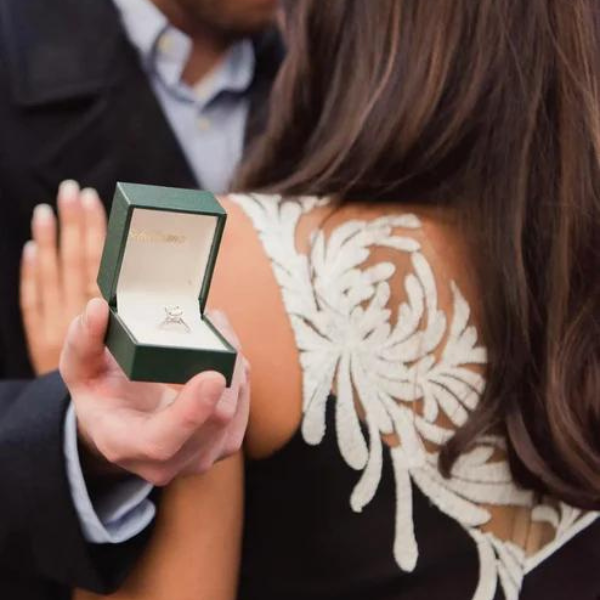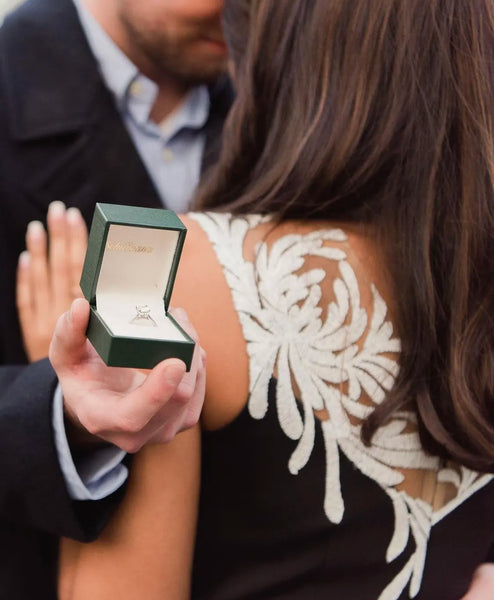
Congratulations! You are thinking about buying an engagement ring and getting ready to ask the most important question of your life up to this point. Now, what do you do? Buying an engagement ring is a process that takes time and usually requires a considerable purchase, so keeping a few things in mind will help you do it well. Here are seven tips to help you navigate the shopping experience for an engagement ring.

SHAPE
Perhaps the most important element in your search for the perfect engagement ring is the shape of the diamond. Gone are the days of two or three options that determine the overall style of the ring. Today there are dozens of shapes to choose from, all with different prices per carat. Knowing in advance a shape (or two) that you will focus on for your search can help to create a much easier buying experience.
KNOW YOUR FOUR C'S
You have probably seen hundreds of articles on diamonds, and every one of them contains the 4C’s. For good reason. Focusing on Color, Clarity, Cut, and Carat weight can help you both stay on budget and find the perfect stone for your engagement ring. Each of the C’s has a unique impact on the price of a stone.
- Color: Diamond color is ranked on a scale of D (completely colorless) to Z (yellow or brown). The closer you get a diamond to D the less color is has, the rarer the stone, and the higher the price. Grades of D-F are considered Colorless and grades G-J considered Near Colorless.
- Clarity: Often confused with color, clarity is actually about the internal features (or lack thereof) in a diamond, called inclusions. Graded on a scale of that runs from Flawless (absolutely perfect) to I3 (easily visible inclusions). Great diamonds can be found across the range of clarity depending on size and shape of the diamond, however FL (flawless) or IF (internally flawless) diamonds tend to carry the highest price point.
- Cut: Cut is perhaps the most overlooked aspect of the 4C’s, but even a D color diamond with Flawless clarity at 2 carats will lack sparkle and shine if the cut is poor. Cut is the result of the precise measurements and facets of the stone and their ability to reflect light to create that signature shine. Look for stones in the Very Good and Excellent categories for the best sparkle.
- Carat: The size of the diamond is measured in Carats and is perhaps the most price heavy portion of the diamond buying experience. All things similar, the greater the carat weight, the rarer and pricier the diamond. You can often save substantial money by purchasing just under your desired carat weight (think 1.89 carats instead of 2.0).

METAL
Choosing a metal for your engagement ring includes a few decisions. The color and type of the metal are both important from bringing out the best shine of the diamond. White gold or platinum tend to reflect the shine and color of diamonds in the colorless to near colorless range, while yellow gold and rose gold can offer a beautiful band for a diamond with a few more inclusions or slightly more yellow color. If you choose a gold band, the Karat of the gold is important for durability. Gold is very soft, so choosing 14K or 18K can help prevent dents and scratches and is less expensive than 24K pure gold.
SETTING
Diamonds are held in place with two different types of settings, prong and bezel. Prong settings typically include four or six prongs, which are narrow metal arms that wrap and support the diamond. Prongs can be claw shaped for a more modern look, or can be rounded for a more classic styling. Bezel settings are wrapped around the diamond and help protect sharp edges, especially on cuts such as marquise or princess. The down-side of a bezel setting is that the side of the diamond is obscured by the setting.
DIAMOND CERTIFICATION
All respectable jewelers will offer you a certified stone from an accredited laboratory. The American Gem Society and the Gemological Institute of America are the standard, and buying a stone certified by one of these two laboratories will guarantee the appropriate measurements, weights, and values of your stone.
RING SIZE
What might seem like a given, knowing the ring size of your fiancée-to-be can help with the buying process and is an important factor in the safety and security of the ring you purchase. An ill-fitting ring will require re-sizing, and wearing it before it is professional sized can lead to loss or damage. Knowing the appropriate size at the time of purchase can help make that special engagement moment absolutely perfect.
WORK WITHIN YOUR BUDGET
Perhaps the only really measure that matters when shopping for an engagement ring, total price. Being clear on what you can afford and being up front with the jeweler you are working with on your budget for an engagement ring can help you save time and effort towards picking your perfect ring. Jewelers are extremely knowledgeable and can help you make adjustments to different elements of your ring like the color or clarity of a stone and the metal of a band to assist you in staying on budget.
Once again, we say Congratulations!
If you are thinking about buying an engagement ring, we know you have a lot of information to process, so following these seven tips can help you select a ring your fiancée-to-be will love not only when you pop the question, but for all the years ahead.

